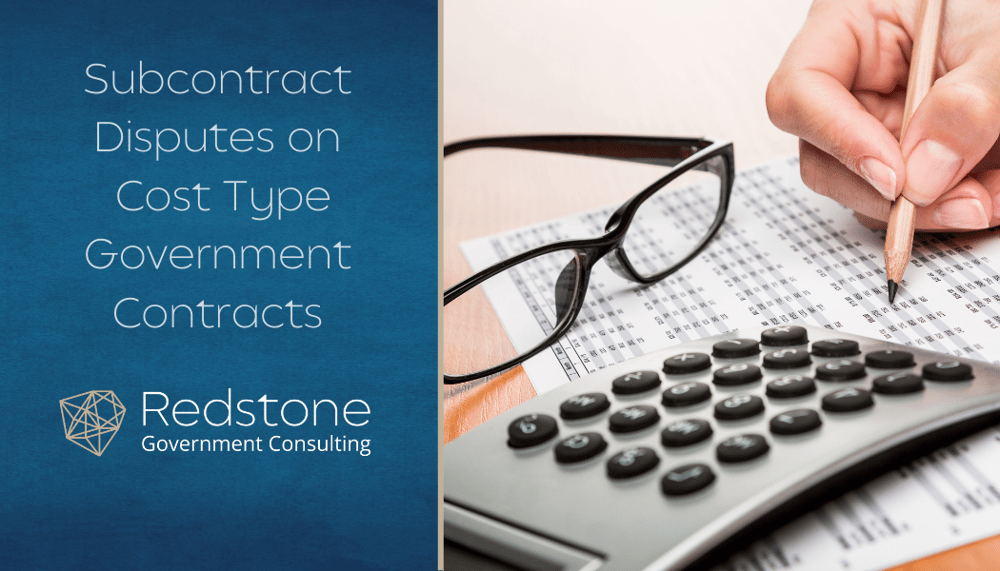
Although many of us think of contract disputes as those involving a prime contractor and a U.S. Government agency, subcontracts can also trigger differences of subcontract interpretation between the prime and subcontractor. In Civil Action No. 1:16-cv-215, the United States District Court for the Eastern District of Virginia decided a diversity breach of contract case between government contractors (the contractor and subcontractor names are a matter of public record, thus disclosure). Fluor (the subcontractor) contended that they did not agree to a 2.3% cap to their G&A on a proposal effort with the United States Air Force. Their proposal, as a subcontract to their prime contractor, PAE, was ultimately selected for the award, at which time, a subcontract agreement was executed and the two parties began their respective performance on the contract. The specific language of that subcontract agreement is the heart of this case (differentiated from a dispute over the regulatory language contained in a subcontract flow-down).
This dispute arose for work in Option Period 1, for which Fluor submitted an invoice including 5.5% G&A (versus the proposal’s G&A rate of 2.3%). This dispute was temporarily resolved when Fluor accepted for Option Period 1 “the 2.3% G&A billing rate with the understanding that before the beginning of each contract period, the 2.3% G&A would be reviewed by both parties and revised as deemed appropriate.” Over the course of the contract, the issue with the capped G&A rate continued to fester, until ultimately claims were brought by Fluor.
The language that you agree to in your subcontract is crucial; the fact that the parties might agree to revise that language is almost meaningless. In this scenario, Fluor decided to accept PAE’s capped G&A rate for proposal purposes with the expectation that Fluor would ultimately receive a FFP subcontract to perform their scope of the work. PAE provided no guarantees nor promises that this would be done. In execution of their subcontract, the drafted language did not speak to their arrangement being FFP; to the contrary, it cited that Fluor would meet the terms of its proposal to PAE. The Court found the subcontract between Fluor and PAE to be ambiguous as to the reference “proposal”.
When a contract has language ambiguities, the Court may consider parol evidence to establish the parties’ intent with respect to the G&A rate that was recoverable. “More specifically, the Court may consider parol evidence concerning (1) which specific proposal Fluor submitted to [PAE] to meet the requirements of Final Proposal Revision (FPR), (2) whether this proposal allowed Fluor to recover its actual G&A rate or limited Fluor to a 2.3% G&A rate, and (3) whether the parties intended to limit Fluor's recovery of G&A under the Subcontract to that in [Fluor's] proposal submitted for FPR (Final Price Revision)."
Under Virginia law, the plaintiff has the burden of proving, by a preponderance of the evidence, that they were entitled to recover more than what they have been paid. Ultimately, based upon the decision, Fluor’s arguments did not carry the weight necessary to fulfill this burden. PAE did not breach the subcontract because the subcontract language intended to cap the G&A rate as proposed in the FPR.
The takeaway with this case is simple (or at least appears to be when taking a retrospective view): When working as a subcontractor, you need to be sure that the language within that agreement is well drafted to remove any ambiguities. In this case, it seems that the contracting parties agreed to different terms, at least with respect to the billable/recoverable subcontractor G&A rate. Unfortunately for Fluor, the language of the subcontract coupled with the proposal allowed as parol evidence was not enough to prove Fluor’s assertions. There is at least one other lesson for anyone explicitly accepting unfavorable terms and conditions based upon a promise to revisit those at some future point: Specificity takes precedence over non-specific promises.

